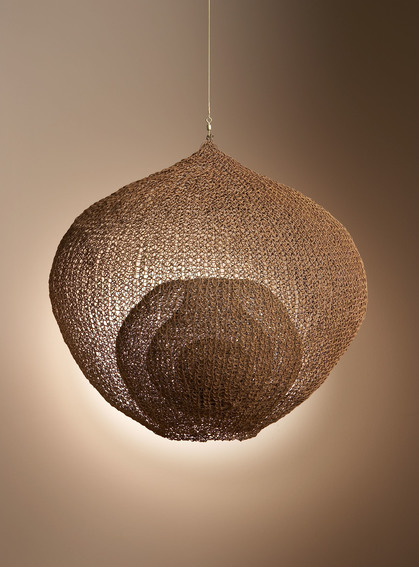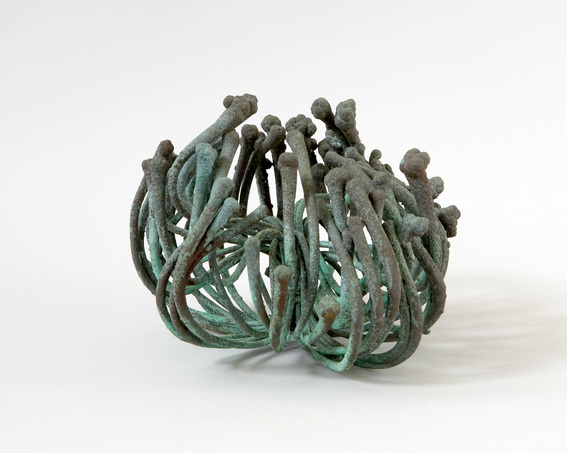-
From Current Issue
-
- Editor’s Letter Fire in the Heart
- Reviews I Gusti Ayu Kadek Murniasih
- Reviews 11th Seoul Mediacity Biennale: “One Escape at a Time”
- Dispatch Networked China
- One on One Monira Al Qadiri on Yukio Mishima
- Essays The rise of independent art spaces in pandemic-era Shanghai
- Features Tuan Andrew Nguyen
- Table of Contents
- Web Exclusives
- Archive
- Subscribe

R
E
V N
E
X
T
Installation view of RUTH ASAWA‘s "Life’s Work" at the Pulitzer Arts Foundation, St. Louis, Missouri, 2018–19. Photo by Alise O’Brien Photography. Copyright Alise O’Brien Photography and the Estate of Ruth Asawa. Courtesy the Estate of Ruth Asawa and David Zwirner, New York / London / Hong Kong.
Though celebrated in 1973 with a retrospective at the San Francisco Museum of Modern Art, Ruth Asawa was under the art world’s radar for many years outside of her native California, and especially San Francisco, where she lived. Asawa has seen growing international attention over the past decade. The revival started with an acclaimed survey of her innovative sculptures at her home city’s De Young Museum in 2006, and was spurred dramatically by representation and a comprehensive 2017 solo exhibition by David Zwirner gallery in New York. Born in rural California in 1929 to Japanese immigrant parents, Asawa is best known for her biomorphic, loop-wire sculptures, inspired by wire egg baskets, which a local craftsman taught her to make while she was teaching children art in Mexico in 1947. She continued to hone her craft, becoming an important creative force in the Bay Area, as an artist and educator, until her death in 2013.
“Life’s Work,” Asawa’s retrospective at the Pulitzer Arts Foundation, traced her evolving artistic vision and use of her signature material over six decades through around 80 works. Exquisitely installed across two floors of the building, the wire sculptures floated above structural islands on the floor and rested on white pedestals, with two-dimensional works displayed in smaller galleries.
Suspended in the Entrance Gallery, Untitled (S.095, Hanging Single-Lobed, Six-Layered Continuous Form Within a Form) (circa 1952) offers insight into Asawa’s inventive and complex deployment of her looped-wire technique through its descriptive title, based retrospectively on a cataloging system that she devised late in her lifetime. Starting with the smallest sphere, Asawa had worked outward using a single strand of wire to weave five more overlapping spheres. Further into the exhibition space, Untitled (Hanging Group of Four, Two-Lobed Forms [S.046 c, a, b, & d]) (1961)—the only instance in her oeuvre of multiple pieces grouped as a single work—exemplifies Asawa’s acute spatial awareness and ability to create relationships between her sculptures, giving form to the negative space between them. Three other characteristic hanging pieces, including one with two spheres attached with chain, were presented in dialogue with her painting Untitled (SF.031, Red Meander on Pink) (circa late-1950s), which explores positive and negative space in interlocking patterns through the repetition of wave-like, curvilinear forms in contrasting tomato-red and light pink.
The Main Gallery’s lobed, hyperbolic, hanging pieces—produced in different permutations of copper, brass, iron, aluminum and enameled wire—showcase the diversity of Asawa’s imaginative forms evoking natural elements, particularly the shapes of vegetables that she remembered from the garden of her childhood home. In contrast to these bulbous forms, the tied-wire pieces on display were inspired by a spindly desert plant that her friends had given to her to draw. Unable to capture its essence on paper, she recreated it by bundling wire, which she shaped into stems and branches to resemble barren bushes, wreaths and miniature trees.
In the main level’s Cube Gallery was a mix of hanging tied-wire works and their knobbly electroplated versions, which were made by soaking tied-wire pieces in a sulfuric acid bath for several weeks. The electroplated sculptures were displayed alongside framed works on paper depicting corresponding forms, for example, the vegetal Untitled (S.132, Freestanding Electroplated Tied-Wire, Organic Form Based on Nature) (circa 1963) by the green ink lithograph Cabbage (P.021) (1984). Even though Asawa had initially studied painting, it was the sculptures that most often informed her later drawings and prints—allowing her the opportunity to reveal her unique forms in varied ways.
Two particular pieces stood out in the Lower Level gallery: Untitled (S.089, Hanging Asymmetrical Twelve Interlocking Bubbles) (circa 1957), a sculpture capturing a dozen interwoven, irregular, circular forms floating like soap bubbles in the air; and a collage of cut paper on a plywood ground, Untitled (BMC.119, Early organic biomorphic forms that resemble Asawa’s later looped wire sculptures) (circa 1946–49), which is one of Asawa’s earliest interpretations of the organic shapes that she would explore for the rest of her life. The latter, created while she was still an art student at Black Mountain College, made such an impression on her teacher Josef Albers that he gifted it to the Busch-Reisinger Museum at Harvard in 1949, the year Asawa left university to set out on her 60-year career, which eventually blossomed like the nature that inspired it.
Paul Laster is a New York desk editor of ArtAsiaPacific.
Ruth Asawa’s “Life’s Work” is on view at the Pulitzer Arts Foundation, St. Louis, until February 16, 2019.
To read more of ArtAsiaPacific’s articles, visit our Digital Library.











